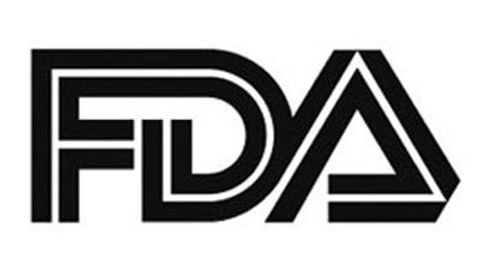FDA Approves Zanubrutinib and Obinutuzumab in R/R Follicular Lymphoma
The combination of zanubrutinib and obinutuzumab is now an approved treatment option for adult patients with relapsed/refractory follicular lymphoma after at least 2 prior lines of therapy.

- Compared with other approved Bruton tyrosine kinase (BTK) inhibitors, zanubrutinib (Brukinsa) has shown to inhibit the proliferation of malignant B cells across multiple disease relevant tissues.
- This accelerated approval in the third-line for the treatment of adults with follicular lymphoma (FL) marks the fifth indication for zanubrutinib.
- Results from the phase 2 ROSEWOOD study (NCT03332017) support this FDA approval of zanubrutinib and obinutuzumab (Gazyva) for patients with relapsed or refractory (R/R) FL.
The FDA has granted accelerated approval to the combination of zanubrutinib and obinutuzumab for the treatment of adult patients with R/R FL after at least 2 prior lines of therapy.1
This regulatory decision is supported by findings from the phase 2 ROSEWOOD study which demonstrated that at a median follow-up of 12.5 months, zanubrutinib given in combination with obinutuzumab yielded superior efficacy vs obinutuzumab alone. The combination elicited an overall response rate (ORR) of 68.3% vs 45.8% with obinutuzumab alone, respectively (P = .0017), and the complete response (CR) rate was 37.2% vs 19.4% (P = .0083). Further, 18-month landmark duration of response (DOR) was 69.3% (95% CI, 57.8%-78.2%) and 41.9% (95% CI, 22.6%-60.1%) for the investigative and control arms.
"I am excited to see the results of this trial and the fact that this now offers a new opportunity for a therapy in the relapse setting for follicular lymphoma. This is a disease that has a relapsing and remitting course, and so having multiple agents and combinations available to patients really offers an overall benefit to patients and to clinicians," said Christopher Flowers, MD, MS, Department of Lymphoma - Myeloma, Division of Cancer Medicine at MD Anderson Cancer Center, said in an interview with Targeted OncologyTM.
At a median follow-up of 20.2 months, the ORR observed with the combination was 69.0% compared with 45.8% among patients treated with obinutuzumab alone (P =.0012). Further, there was a reduced risk of disease progression or death by 50% with the combination vs obinutuzumab alone (HR, 0.50; 95% CI, 0.33-0.75).2 Across arms, the CR rates were 39.3% and 19.4% (P = .0035), and the median duration of CRs (DOCR) were not estimable (NE; 95% CI, 26.5-NE) and 26.5 months (95% CI, 2.7-NE), respectively.2 The median DOR was NE (95% CI, 25.3-NE) and 14.0 months (95% CI, 9.2-25.1), respectively, in the investigative and control arms.
The superiority of zanubrutinib plus obinutuzumab over obinutuzumab alone with regard to the ORR was consistent across the subgroups. The 18-month duration of response rate was 70.9% in the combination arm and 54.6% in the obinutuzumab alone arm. The ORR by investigators after crossover was an exploratory endpoint. The ORR for 29 patients who crossed over to zanubrutinib plus obinutuzumab was 24.1%.
The median time to next anti-lymphoma treatment was NE in the zanubrutinib plus obinutuzumab arm vs 12.1 months in the obinutuzumab alone arm (HR, 0.37; 95% CI, 0.23-0.60; P< .0001).
For safety, findings were consistent with what has previously been demonstrated in studies of both agents. In the combination arm and obinutuzumab alone arm, the most frequently reported treatment-emergent adverse events in the primary analysis were diarrhea (18.2% v 16.9%), fatigue (15.4% v 14.1%), and pyrexia (13.3% v 19.7%).
No unexpected safety findings were associated with the zanubrutinib plus obinutuzumab combination. Further, the combination has a favorable benefit-risk profile for patients with R/R FL.
Lymphomas: © immimagery - stock.adobe.com

About ROSEWOOD
The open-label, randomized, phase 2 ROSEWOOD evaluated zanubrutinib combined with obinutuzumab vs obinutuzumab alone for the treatment of adult patients with R/R FL who had previously been treated with 2 or more lines of therapy.3
The study included 217 patients with pretreated R/R non-Hodgkin FL, including 145 who were treated with the combination and 72 who were given obinutuzumab monotherapy. In both arms, obinutuzumab was given on days 1, 8, and 15 of cycle 1; day 1 of cycles 2 through 6; and then every 8 weeks (up to 20 doses maximum). In the arm that also received zanubrutinib, the agent was given at a dose of 160 mg twice a day until progressive disease or unacceptable toxicity.
Patients in the obinutuzumab arm were allowed to cross over to the combination regimen if they had confirmed progressive disease or no response at 12 months. At the primary analysis cutoff date of October 8, 2021, 50% of patients in the combination arm were still on treatment and 26% were still on treatment in the obinutuzumab arm. The main reason for treatment discontinuation was disease progression followed by crossover to combination therapy.
Among those enrolled, the median number of prior lines of therapy was 3 in each treatment arm (range, 2-11). Approximately one fourth in each arm had 3 or more prior lines. Moreover, about one-third of patients (34.5%) treated with the combination and 40.3% given obinutuzumab alone had an elevated level of lactate dehydrogenase at screening. Around half of patients were refractory to rituximab (Rituxan) in each arm, and in the combination arm and obinutuzumab alone arm, 32.4% and 40.3% of patients were refractory to their most recent line of therapy.
The primary end point is ORR assessed by independent central review (ICR) according to the Lugano classification, and secondary end points of the study include investigator-assessed ORR, DOR, progression-free survival, overall survival, and analysis of safety.
REFERENCES:
1. FDA grants accelerated approval to zanubrutinib for relapsed or refractory follicular lymphoma. US FDA. March 7, 2024. Accessed March 7, 2024. https://tinyurl.com/5sx5k4s4
2. Zinzani PL, Mayer J, Auer R, et al. Zanubrutinib plus obinutuzumab (ZO) versus obinutuzumab (O) monotherapy in patients (pts) with relapsed or refractory (R/R) follicular lymphoma (FL): Primary analysis of the phase 2 randomized ROSEWOOD trial. J Clin Oncol. 2022;40(suppl 16): abstr 7510. doi:10.1200/JCO.2022.40.16_suppl.7510
3. A study comparing obinutuzumab and BGB-3111 versus obinutuzumab alone in treating R/R follicular lymphoma (ROSEWOOD). ClinicalTrials.gov. Updated May 26, 2023. Accessed November 21, 2023. https://classic.clinicaltrials.gov/ct2/show/NCT03332017
Examining the Non-Hodgkin Lymphoma Treatment Paradigm
July 15th 2022In season 3, episode 6 of Targeted Talks, Yazan Samhouri, MD, discusses the exciting new agents for the treatment of non-Hodgkin lymphoma, the clinical trials that support their use, and hopes for the future of treatment.
Listen
Does Odronextamab Show Hope in FL and DLBCL Despite Regulatory Hurdles?
November 5th 2024Despite regulatory challenges from the FDA, odronextamab has received European approval for the treatment of patients with relapsed/refractory follicular lymphoma or diffuse large B-cell lymphoma following 2 prior treatments.
Read More